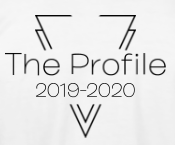For as long as entertainment has been around, creators have tried to talk about dark, uncomfortable, and/or unsettling topics for some type of gain. With older examples, such as the Brothers Grimm, a lot of it was made to scare children into behaving better. While that might not hold up too well nowadays, that doesn’t mean hard topics aren’t being discussed elsewhere. And while some creators tackle them well, showing the hard side of difficult situations, many others don’t. They may glamorize, romanticize, and/or infantilize dark topics purely for their own monetary gain, leading everyday people to have an inappropriate view on these topics.
Trigger Warning! This will talk about depression, suicide, eating disorders, and other possibly triggering topics. Reader Discretion Advised
A great example of this is Netflix’s “13 Reasons Why” (2017). This is a show about a teenage boy listening to his late classmate’s tapes explaining why she ended her life and her “13 reasons why”. It explains that the reason that Hannah Baker, the girl who committed suicide, did so because of other people and the harm they did to her. While this might be seen as a good message, it wasn’t taken well as people accused the show of glamorizing depression and showing struggling teenagers that suicide is the answer to their pain, not reaching out for help. Hannah was also critiqued as a character because she was portrayed as a vengeful, petty teenager instead of someone who was truly struggling.
Beyond the actual content in the show, the concept already had people unhappy, as this show was made to entertain. They set up the show as a mystery/drama that made awful events that happened to Hannah as plot points or twists to entertain the audience, not to educate or spread awareness.
“Thinspiration” is yet another example, this time being a general trend that spans across many different types of media. Thinspiration is a trend to glorify and/or encourage unhealthy eating habits/ disorders. To make this clear, there is nothing wrong with people sharing diets or workout routines, but Thinspiration is not that. Thinspiration is an obsession with women who are very petite, often with their bones being visible through their skin. This may include someone saying what they eat in a day, a workout routine, or using shame to make an audience feel insecure. While tags on social media for this have been blocked on places like Tumblr and Instagram, it is still very easy to find this content. It also often targets young girls, often who already have body image issues.
Thinspiration is often paired with uncomfortably sexual implications, a gross amount of body image obsession, and a romantic I-can-fix-them mentality. This is showing women, more specifically young girls and teenagers that being unhealthy is the same as being beautiful. On a more positive turn though, this “trend” has died out in popularity, first peaking in 2015 and slowly losing public acclaim. People are now speaking out about its harm, mostly people who were children when the trend became popular.
In general, social media has romanticized many issues over the years. Commonly, these trends only last for a few weeks tops, but these few weeks can do a lot of harm for people who struggle with the issues that people try to capitalize on. A more recent example of this is a term called “Bedrotting”, the practice of just laying in bed for days on end as a form of “relaxation”. Funnily enough, my only encounters with this trend were from people criticizing it, saying that what she’s explaining is not a positive thing, that many people who struggle with depression and/or other mental health issues do what the creator is describing, but not for the “relaxation”, because they cannot physically get out of bed.
Even though all of these examples (and plenty more) have received backlash, this content will still be made constantly because they still make companies money. The only thing we, as a collective, can do to stop this is to try and educate people on the realities of these issues and monitor what children and/or impressionable people watch.






